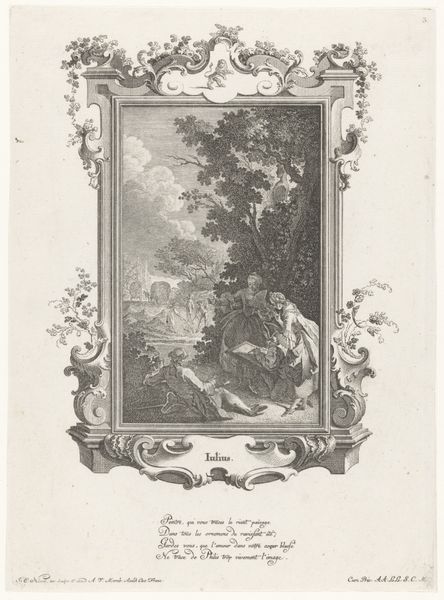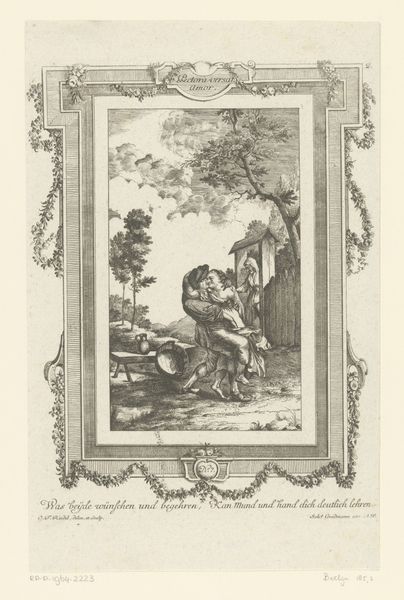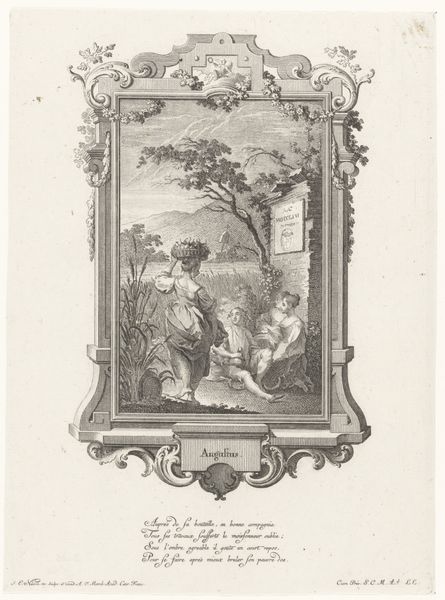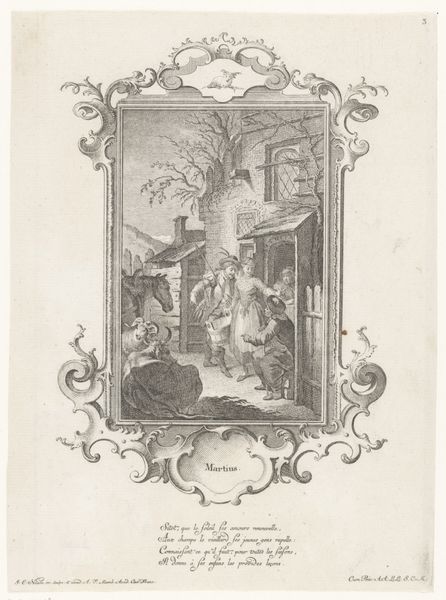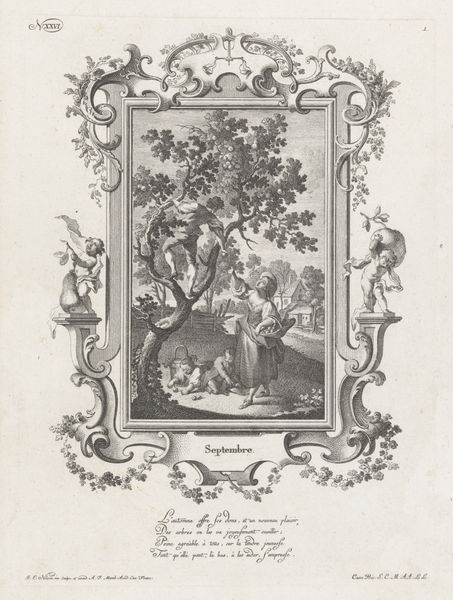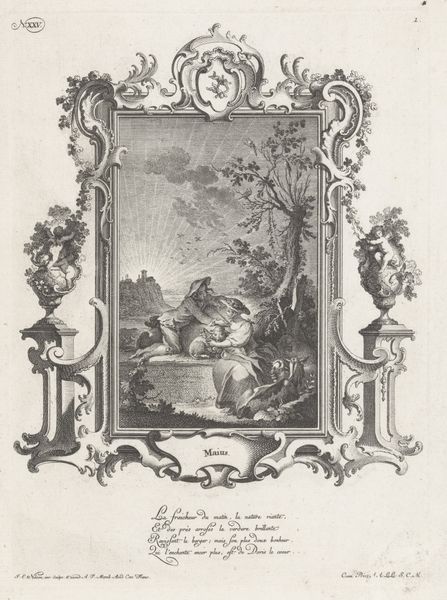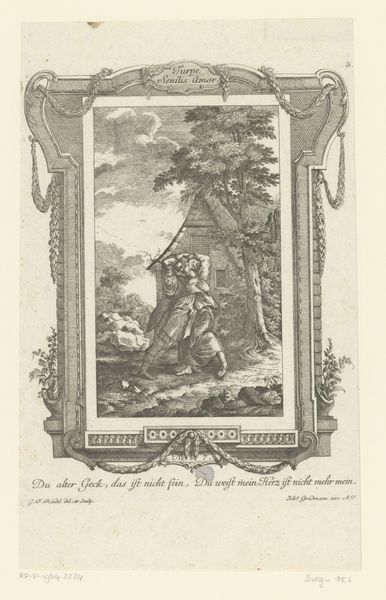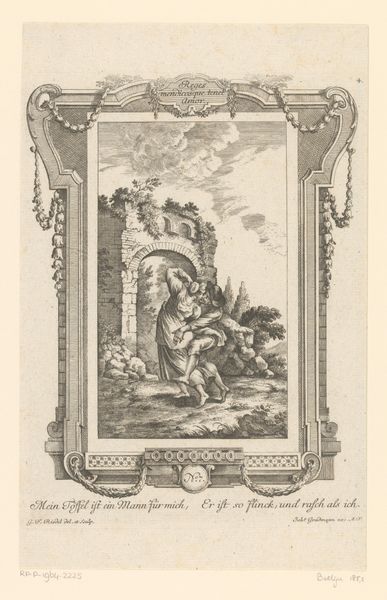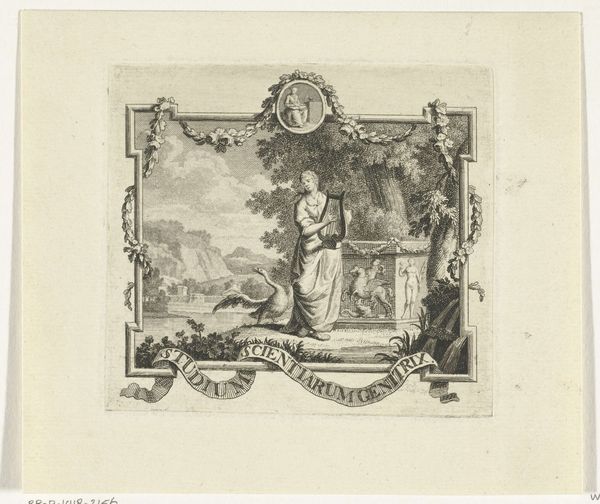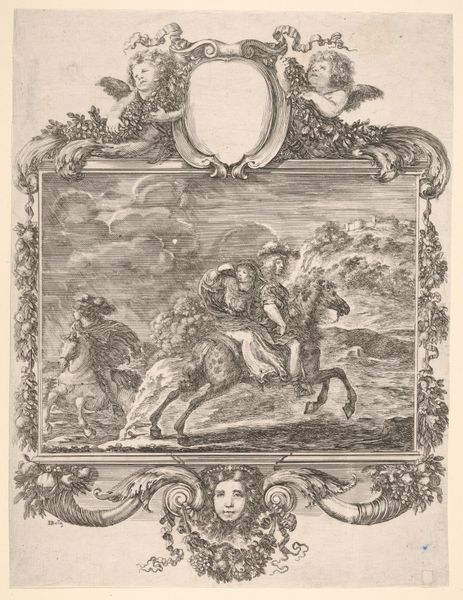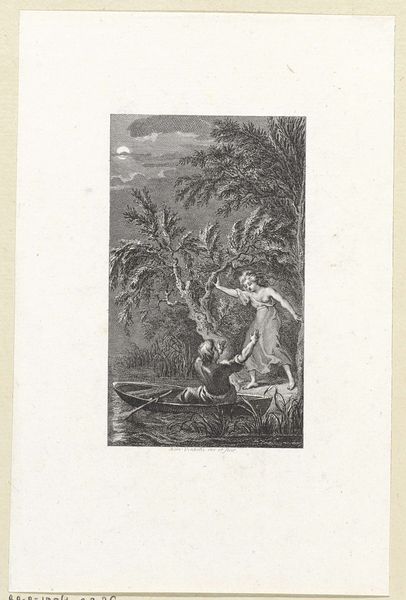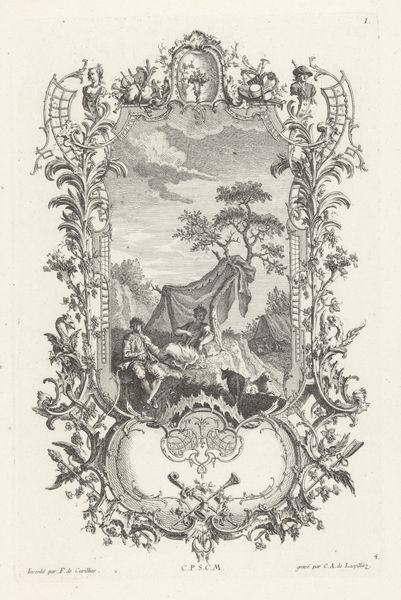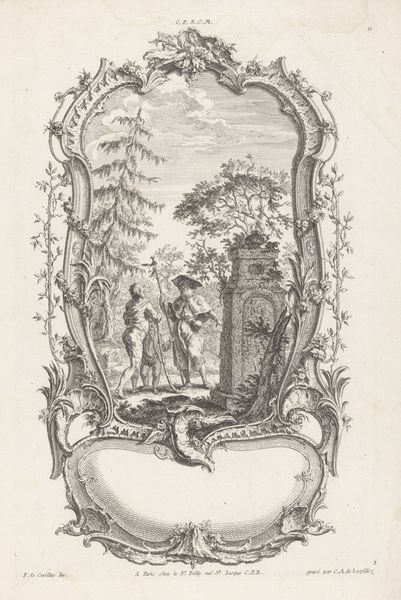
Dimensions: height 264 mm, width 195 mm
Copyright: Rijks Museum: Open Domain
Editor: So, this is "Juni" by Johann Esaias Nilson, created in 1766. It's an engraving, a type of print, and the detail is quite striking. It depicts people fishing, set within a very ornate frame. What jumps out to me is how much labor seems to be involved, even in something seemingly leisurely like fishing. What are your thoughts? Curator: Indeed. The material reality of this image—the lines etched into the metal plate, the pressure of the printing press, the paper itself—speaks volumes. Look at the different methods of fishing being depicted. It is about process, about how human hands are shaping their environment to provide resources. It asks us to consider how deeply intertwined the pursuit of leisure was and is with necessary work, both for food gathering and the print-making process itself. What do you make of the framing? Editor: I hadn't thought about the link between making a print and gathering food. Interesting. The frame almost feels separate from the scene, but I guess frames often did at this time? The fancy floral decoration, and the insect above the landscape – these are more signs of artistic labor. Was the image trying to say that artistic labour is divorced from food gathering labour, or are the frames not symbolic, merely decorative? Curator: Consider the economics of printmaking in 1766. Prints like these were commodities. They were products of skilled labor, bought and sold in a market. The very act of framing this image with elaborate ornamentation emphasizes its status as a valuable object, reinforcing the relationship between aesthetics and material exchange. The "fine art" print contains within it the record of human activity and labour. The lobster reminds the viewer about how to catch lobsters. There is not much different from catching lobsters than capturing a drawing with precise engraving. What did you notice in the written element below the frame? Editor: Ah, yes, the script underneath... it seems to be a little poem praising the delights of summer and fishing. So, even that seemingly effortless text is, again, produced by a print. It's as if Nilson wants us to consider how humans impact our environment. Curator: Precisely! The poem also makes it another layer of cultural value, like art can be seen to make nature have even greater worth. Seeing these works through a material lens highlights those often-overlooked processes, and I can see how it links together artistic work with nature's providing work for everyone. Thanks.
Comments
No comments
Be the first to comment and join the conversation on the ultimate creative platform.
